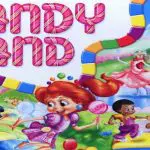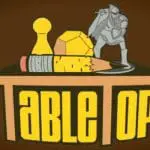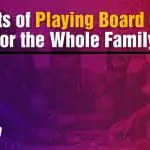Todd Porter is the creator of BoardCraft, an open-source 3D printed gaming platform. It’s the foundation on which he built NecroVirus, a Zombie-themed game that combines elements of traditional board games as well as tabletop games. He was kind enough to sit down and answer some our questions about the BoardCraft platform, his favorite games, and where he thinks the future of gaming is heading.
How did you come up with the idea of BoardCraft? How long have you been working on the concept?
Before I was in video games, I played tabletop games. In fact, in college I was president of our gaming society and we played all kinds of war games, role playing games, and beer and pretzel games. Dungeons and Dragons, Runequest, Chivalry and Sorcery, Gettysburg, Swashbuckler, on and on and on.
When I left my last job I started experimenting with 3D printers and built applications to automate 3DStudio Max, Photoshop, and the open-source 3D printer software so I could automate making game pieces.
As time went by I realized all these tools could be turned into a product that could enable others to build tabletop games…so BoardCraft was born. I named it BoardCraft because what I wanted to do was have users easily build — like Minecraft — and then be able to print out their creations.
So for the last year and a half we’ve been coding, building models, designing and finally had a finished product based on this collection of technology — NecroVirus.
Who is on the team and what kind of experience do they have?
Myself (I write most the code, do a lot of the art, and design the game), Jim Galis heads up Product Development and does everything from attend to the websites, Facebook pages, Kickstarter, as well as manage our internal and external art, design, and even the roadshow crew. I enlisted my brother, Quintin, and nephew Ryan (avid gamers) to travel to shows and stores to evangelize the product. My college buddies Dave Barnes and Arvin Van Zante have 50 years of game design for professional companies like Avalon Hill (Dave played with the original D&D crew), and rounded it out with my brother Aaron who works multiple 3D printers generating our games.
What are some of the challenges of building what is essentially an open-source game design platform?
The biggest challenge was first finding the right 3D printers and then navigating the various open source software…tough when you don’t know the terms of art for the industry. Now EVERYONE in our company has 3D printers and we can have a conversation which almost no one but us understand — from bed temperatures, nozzle widths and temperatures, to infill percentage, retraction amount…we are all experts now.
How do you approach issues like providing credit to artists and contributors? Do you see BoardCraft as a platform where like-minded people — people who already have an idea to build a game — could connect with others who could help them make it a reality?
Our site will have stores for people who want to put up their art, design, printing services, etc. We don’t have a proprietary format — standard STL (Stereo Lithography format) files are used and it’s up to our contributors to dictate price and credit. You have it exactly, we want to create a platform for like-minded people to build tiles for tabletop and board games as well as build the rules, cards and components if it is a full-fledged board game.
What is the plot behind NecroVirus? What sort of games would you say it has the most in common with? Not just the Zombie theme, but in terms of game play, too.
NecroVirus, being built on a completely new platform, is really not like anything out there. It has miniatures but plays more like a strategy game. It has movement like a board game, but objectives like a role playing game. We’ve had hundreds now play it at stores and conventions and they all love it but describe it as wholly unique.
At what point did you decide that BoardCraft should be available in 2D and 3D? What kind of design challenges did you face in transitioning between the two and trying to design a game that works in both?
It was really a cost decision. Obviously 3D printed buildings are more expensive than 2D printed cardboard, and we wanted to keep costs down. The way we made it less challenging was to keep the base board as 3D (the Secure Connect baseboards and the roads). That way you can drop the 2D printed assets into the void and then later upgrade to 3D printed buildings which, of course, work with the system.
The Secure Connect system is really the heart of BoardCraft. All tiles — no matter if they are 28mm dungeon tiles or 15mm NecroVirus tiles or terrain or sci-fi or Civil War — they all plug into the same base. So you could create your own Civil War Zombie game and use a mixture of the tiles. Or maybe get together with your friends to play War Machine or Warhammer or D&D and use one person’s terrain tiles and another’s city tiles, etc.
How does it feel to take something so personal, like a game you’ve developed yourself, and set it free on the Internet with the expectation that others are going to alter it, and maybe even come up with a cooler idea?
I’ve never bought any game and played it as written. How many people have added extra money when you LAND on GO in monopoly? How many people have made mashups of Risk and Monopoly? Everyone modifies games, we are just embracing that creativity.
You’ve been to Quake Con in Dallas and Gen Con in Indianapolis, as well as several other events, recently. What did you learn about the game from the experiences? What has the response generally been?
Our booth has been packed in both places. People come by in droves to see NecroVirus, the Dungeon Tiles, and especially the 3D printers. The reaction has been overwhelmingly positive. We have over 100 response cards that we had users fill out and amazingly there are none that are negative and 10 that have great suggestions for modifications to gameplay.
What we’ve learned is that gamers are embracing NecroVirus as not just a cool technology, but a really fun game to play.
What’s your favorite game to play?
I have so many. I think the one I play the most now (having twin 8-year-old boys) is Ticket to Ride. When I get together with my friends we play everything from D&D and War Machine to Jamaica and old album cover games you probably have never heard of. Road racing games, Civil War games, beer and pretzel games – and recently I’ve gotten into Dungeon Command (D&D Lite).
What do you see in the future of tabletop game design?
At the conventions you still see large surfaces with gamers drawing their dungeons or caves or terrain on erasable mats…that really hasn’t changed, as I have one of those same mats that I used in college. But once gamers embrace 3D printing, they will cover their tabletops with beautiful, immersive 3D tiles. Everyone talks about Virtual Reality as holding the promise of future games, but I always tell everyone as they gawk at our 3D printed models: “You know what’s better than Virtual Reality?….Reality!”
You can learn more about BoardCraft, and order your own copy of NecroVirus, at www.boardcraft.com. The starter edition is available for $125, the premium edition for $250.
What do you think of the BoardCraft concept? Do you think this is where tabletop gaming is heading as well? Or do you disagree? Leave us a comment and let us know how you feel!





